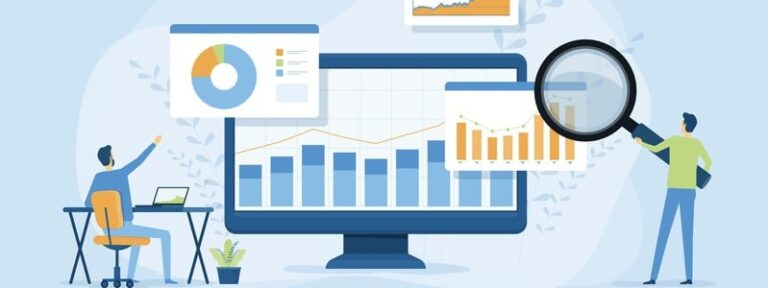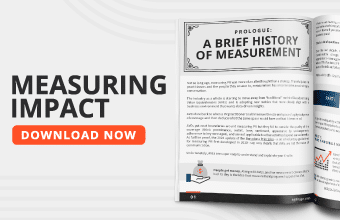For marketers, it seems like social media metrics are never-ending. Not only does an omnichannel approach involve having a presence on multiple social media platforms, but you then have to decide which metrics best reflect the level of success you are having.
Yet, at the same time, knowing how well you are performing is crucial to future planning of posts and campaigns.
With more than 4.95 billion people using social media, and platforms like Facebook seeing around 70 percent of their monthly users logging in every day, social media is an essential cog in your marketing strategy. Two key metrics are reach and impressions, but which is the best to look at?
Defining reach and impressions
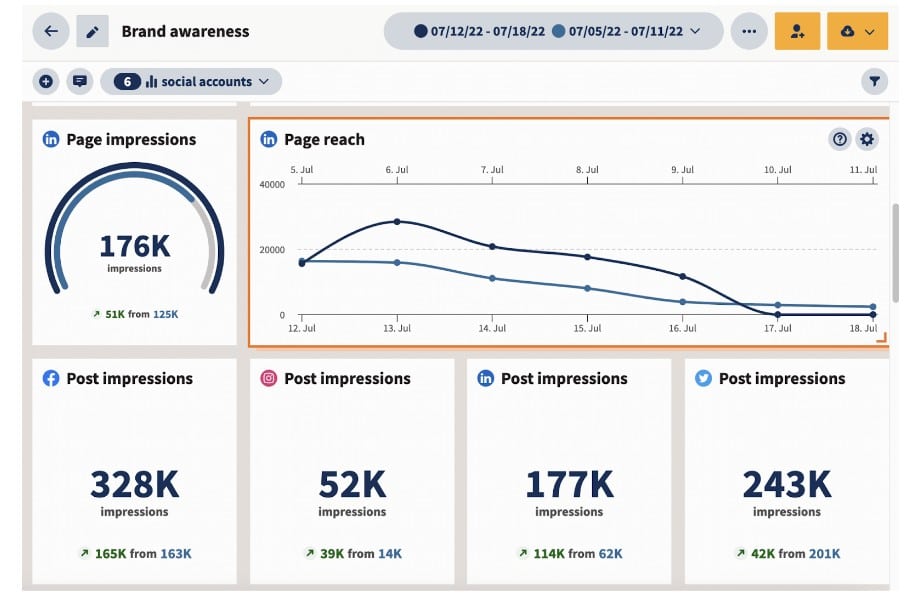
Image sourced from blog.hootsuite.com
Reach
Let’s say you post links to a blog piece entitled, ‘What is Apache Hive used for?’ If 250,000 people see that post and related content, then that is your organic reach. Whether those views lead to sales or conversions is completely separate. Depending on your targets, you could view that 250,000 figure as either a success or a failure.
Impressions
Taking the same post as an example, let’s say that someone sees the post but then sees it twice again later when friends share the post. That would count as three impressions as the person has seen it three times on their screen. But it would still only count once when it came to reach.
The impressions are the total number of times your blog posts are seen but reach represents the unique views that the post has received.
Measuring reach vs. impressions on different platforms
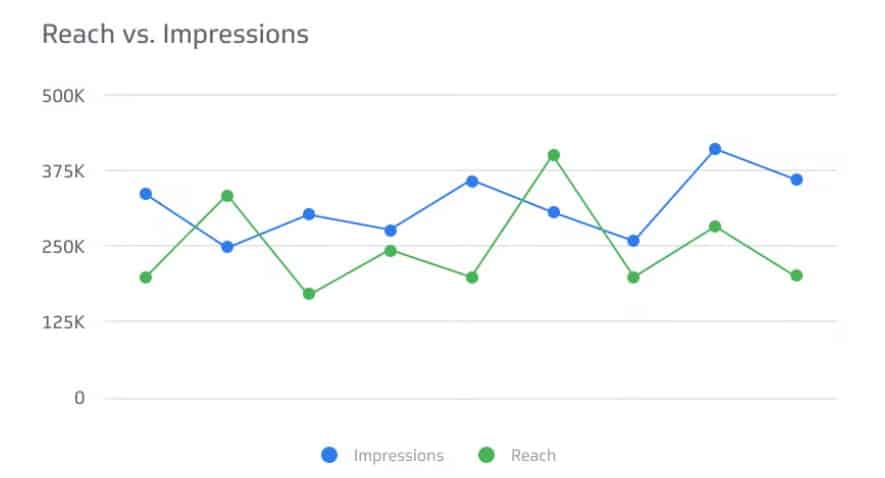
Image sourced from klipfolio.com
Wouldn’t it be wonderful if there was a level playing field when it came to using social media analytics tools on the different platforms you use? Sadly, that’s not always the case, so you need to look at each in turn before you can make any real comparisons as to what platform is producing the best results. Let’s look at the main platforms many marketers will use regularly.
-
Facebook
With around 3 billion active monthly users, Facebook is the most used social media platform. If you are posting from a personal profile, the only ‘metric’ you can really track is likes.
However, if you have set up a business page, then you can see reach and engagement data when you go to the page’s insight section. But if you want to see data on reach versus impressions, then you will only see those figures when you run a campaign and spend money on advertising.
-
Instagram
When it comes to Instagram, you face a similar problem. The only way you can see any data on reach or impressions is if you run advertising campaigns. Given that Instagram is owned by Meta, you will be easily able to see comparable data so you can judge which platform is providing you with the best results.
-
Twitter/X
If you want to compare reach versus impressions, then Twitter/X is probably the worst choice of social media platform. With its own analytic reports, you can only see impressions. Even then, Twitter/X ‘defines’ impressions differently from other platforms.
Let’s say you make a post on Twitter/X about outbound phone calls solutions. Even just scrolling past your posts without reading them would count as Twitter impressions.
-
LinkedIn
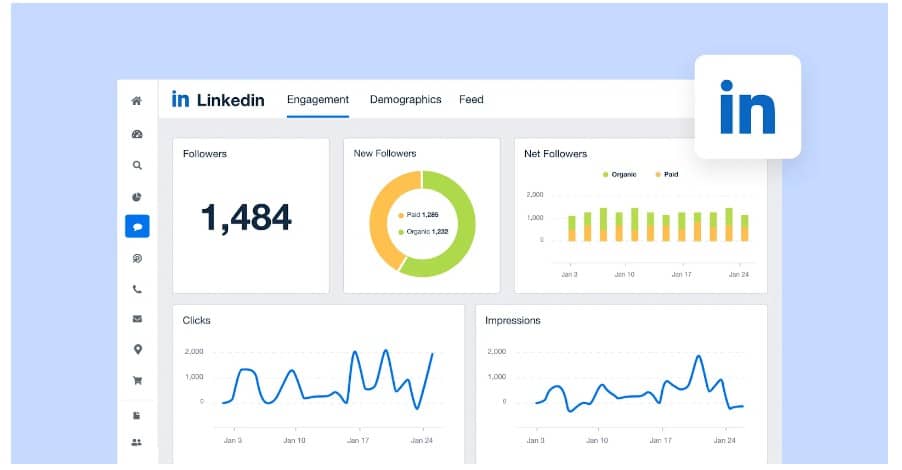
Image sourced from agencyanalytics.com
LinkedIn can be a great platform if you operate in the B2B or SaaS sectors. One ‘quirk’ of LinkedIn is that they count impressions by your content being 50% in view for at least 300 milliseconds.
To further confuse things, LinkedIn calls reach ‘unique impressions’, and they also differentiate between an impression and a view, with the latter being someone watching your video for three seconds or more.
-
YouTube
YouTube definitely likes to confuse things even more. On this platform, an impression is defined as when your video’s thumbnail is displayed for at least one second.
While it counts impressions when your content is shown on devices such as PCs and mobile devices, it doesn’t count when the video is embedded on a website or in an email, nor if they are shown on YouTube’s own mobile website.
This can make analytics awkward, especially when you can only track impressions with the platform’s own analytics.
Reach vs. impressions, which matters most?
The first thing to understand about these two metrics is that they both appear at the top of your sales funnel. At this stage, you are still trying to spread brand awareness and reach your target audience so they read your posts.
Actual sales (and then customer retention) are metrics you would examine later in the process. For now, your social media goals are to improve both reach and impressions.
Which reach and impressions you prioritize is going to depend on what your goals are at this stage. Impressions will likely mean more to you if your goal is to build and establish relationships with your potential customers.
If the same user views content multiple times, it does not mean that they have seen others share the post; they may have returned to digest more information or to compare it with other products or services.
You may instead focus on reach if you are less interested in building relationships and encouraging repeat custom.
Reach may be more important to smaller businesses or startups who want to build a broader audience through their social media strategy and posts. That’s not to say relationships don’t matter to these businesses, just that audience-building will be their first priority.
It’s also worth noting that focusing on reach versus impressions doesn’t mean that you’re ignoring other metrics. You could think of your business as a constantly moving conveyor belt.
As people move down your funnel, you will be using customer experience analytics and also looking at other metrics, such as conversion or engagement rates.
Interconnectedness
While your goals may dictate which you favor regarding reach versus impressions, it’s worth remembering that the two metrics are closely interconnected. Though one might be given priority for a campaign, it would be very unusual if you looked at that metric without looking at the other.
It’s all very well knowing that a post on data clean room providers reached 150,000 people, but if that post had minimal impressions, then the wide reach becomes less effective. Another thing to consider is that impressions do not always equal engagement.
Just because someone sees your post does not mean they engage with it. This is why it’s important to look at your campaign’s overall effects, not just reach and impressions.
Paid vs. organic
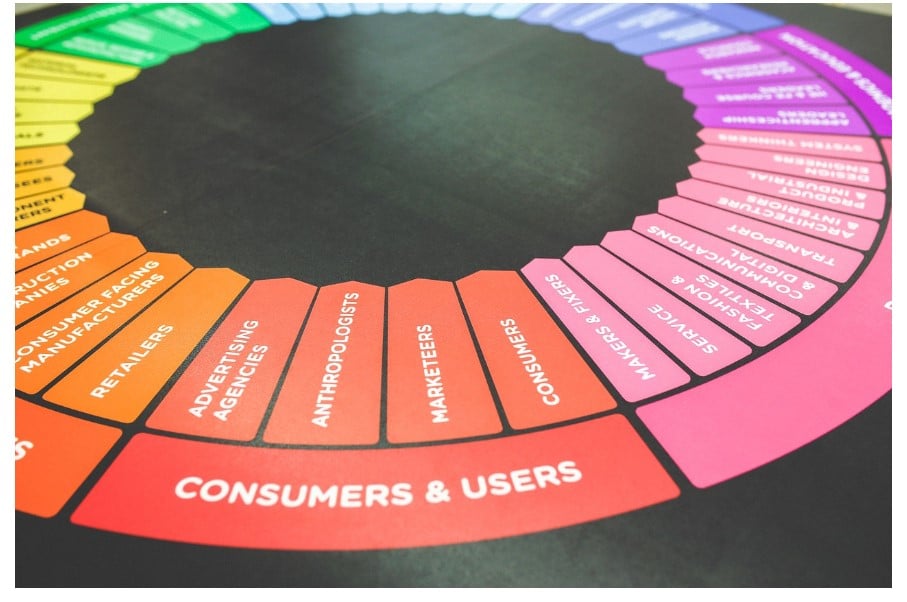
Something else that can muddy the waters is when you are carrying out either organic or paid advertising (or both).
You may get very different results from each, so it’s another area where you have to collect all relevant data and compare the results produced. Depending on where you post, organic advertising may produce limited results when it comes to growing your audience.
Many people who see your organic posts may already be aware of your business and may have progressed down the sales funnel. With paid advertising, you may be reaching a new audience in terms of both reach and impressions. When you’re putting together your marketing tactics, it can be important to keep in mind what it is you want to achieve with a particular campaign.
Reach vs. impressions, so which should you track?
There is no definitive answer to this question, as it depends on what your goals are. While different goals may help you choose which metric to prioritize, you should probably be keeping an eye on both as they can reflect on not only where you post but the quality of your individual posts as well.
As with any metric, you also need to think about the quality and quantity of the data you are collecting and analyzing. Larger businesses and corporations will be looking at enormous amounts of data and may be employing lakehouse architecture to store that data and act as a central repository for the information your analytics tools will access.
However, smaller businesses may want to prioritize reach over impressions, at least in the early stages of their social media presence, especially when they want to grow their audience quickly.
As with any tactic, you need to think about what your goals are while recognizing that those goals will change over a period of time as people move further down your sales funnel.
The takeaway

If you’re a marketing professional, metrics are what inform your decisions and help drive tactics. The metrics you value are never one-off snapshots but should be an ongoing measurement of what you’re already doing and validation of previous decisions.
Using analytics constantly can also help you identify what works and what doesn’t so you can make changes where needed.
It could be argued that reach and impressions matter more to small businesses than to larger ones. Larger businesses already have an established presence and a solid customer base, so reach and impressions may be less of a priority than other metrics, such as customer retention rates and conversion rates.





